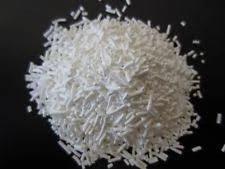
e500 food additive
Understanding E500 A Common Food Additive
In the vast and diverse world of food additives, E500 stands out as a commonly used ingredient that serves several important functions in the food industry. E500, also known as sodium carbonate (or soda ash), is often employed in the preparation and preservation of various food products. This article provides an overview of E500, its uses, safety, and benefits within the food sector.
What is E500?
E500 refers to a group of sodium carbonate compounds, which includes sodium bicarbonate (baking soda) among other forms. These compounds are white, crystalline substances that possess a slightly alkaline nature. While sodium carbonate is widely known for its utility in cleaning products and industrial applications, its role in food processing is equally significant.
Primary Uses of E500 in Food
One of the primary roles of E500 in the food industry is as a leavening agent. In baking, it helps dough rise by releasing carbon dioxide gas when it reacts with acidic components in the mixture. This reaction contributes to the light and airy texture of baked goods such as cakes, cookies, and bread.
Apart from baking, E500 is also used as an acidity regulator. In various food products, it helps maintain a stable pH level, which is crucial for flavor, color, and preservation. This function is particularly valuable in processed foods, where maintaining the right acidity can prolong shelf life and enhance overall product quality.
e500 food additive

Additionally, E500 acts as a stabilizer and thickening agent in certain food applications. It can improve the consistency and texture of sauces, dressings, and dairy products. Moreover, E500 is sometimes involved in the preparation of certain chocolates and confections, where it helps control the viscosity and spreadability.
Safety and Regulatory Standards
E500 is generally recognized as safe by food safety authorities, including the European Food Safety Authority (EFSA) and the U.S. Food and Drug Administration (FDA). When consumed within permissible limits, E500 poses minimal health risks to the general population. It is important to note that, as with any additive, excessive consumption can lead to health issues, particularly related to sodium levels in the body.
Moreover, regulations governing the use of E500 vary by country. Food manufacturers must comply with local laws and guidelines regarding the allowable levels of additives in food products. Consumers are encouraged to read labels on processed foods to be informed about the ingredients they consume.
Conclusion
E500 is a versatile and essential food additive that plays multiple roles in the food industry, particularly in baking and food preservation. As a leavening agent, acidity regulator, and stabilizer, it contributes to the quality and safety of many consumer products. Given its broad acceptance and regulatory approval, it is safe to say that E500 will continue to be a mainstay in food science and technology for years to come. Understanding additives like E500 empowers consumers to make informed choices about their food and nutrition, fostering a better appreciation for the complexities and advancements in food production.
-
Pure Sodium Dichloroisocyanurate Dihydrate | Powerful DisinfectantNewsAug.29,2025
-
Industrial Chemicals: Quality & Purity for Every IndustryNewsAug.28,2025
-
Nitrile Rubber Honoring Strict Production StandardsNewsAug.22,2025
-
Aspartame Ingredients Honoring Food Safety ValuesNewsAug.22,2025
-
Fertilizer for Balanced Plant NutritionNewsAug.22,2025
-
Cyanide Gold Processing with High Purity AdditivesNewsAug.22,2025
-
Formic Acid in Textile Dyeing ApplicationsNewsAug.22,2025
Hebei Tenger Chemical Technology Co., Ltd. focuses on the chemical industry and is committed to the export service of chemical raw materials.
-

view more DiethanolisopropanolamineIn the ever-growing field of chemical solutions, diethanolisopropanolamine (DEIPA) stands out as a versatile and important compound. Due to its unique chemical structure and properties, DEIPA is of interest to various industries including construction, personal care, and agriculture. -

view more TriisopropanolamineTriisopropanolamine (TIPA) alkanol amine substance, is a kind of alcohol amine compound with amino and alcohol hydroxyl, and because of its molecules contains both amino and hydroxyl. -

view more Tetramethyl Thiuram DisulfideTetramethyl thiuram disulfide, also known as TMTD, is a white to light-yellow powder with a distinct sulfur-like odor. It is soluble in organic solvents such as benzene, acetone, and ethyl acetate, making it highly versatile for use in different formulations. TMTD is known for its excellent vulcanization acceleration properties, which makes it a key ingredient in the production of rubber products. Additionally, it acts as an effective fungicide and bactericide, making it valuable in agricultural applications. Its high purity and stability ensure consistent performance, making it a preferred choice for manufacturers across various industries.





